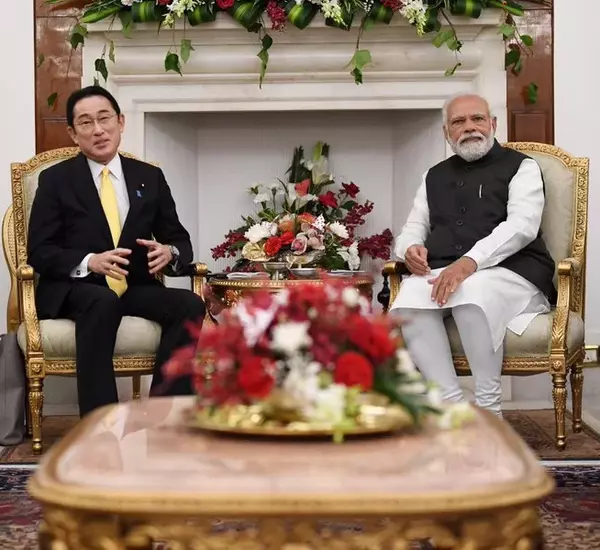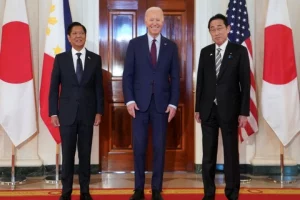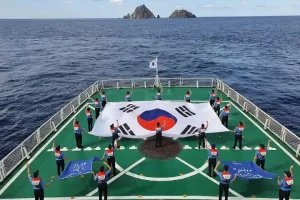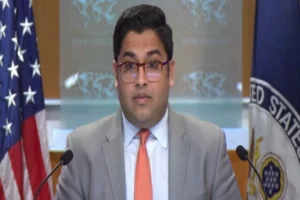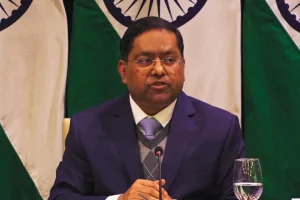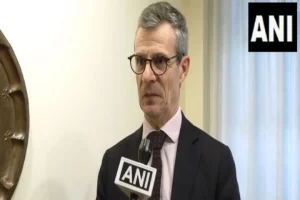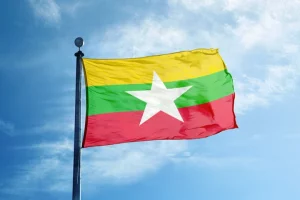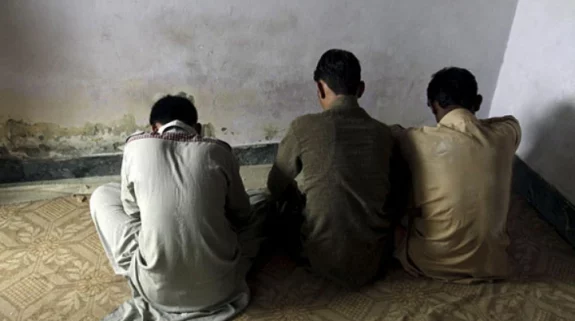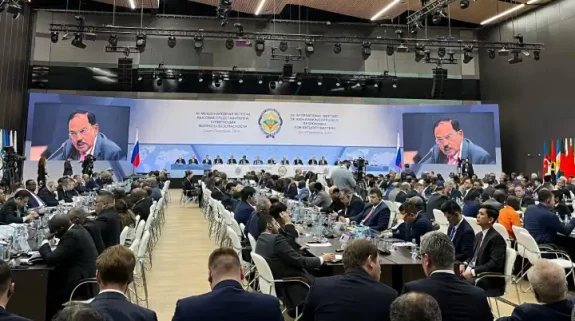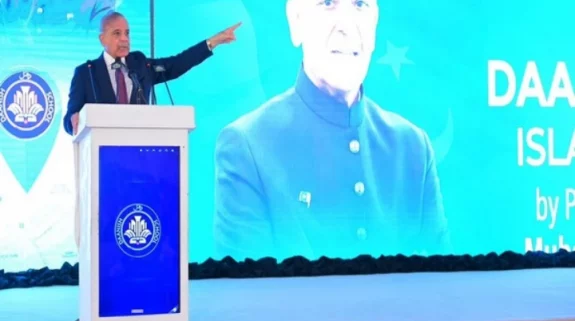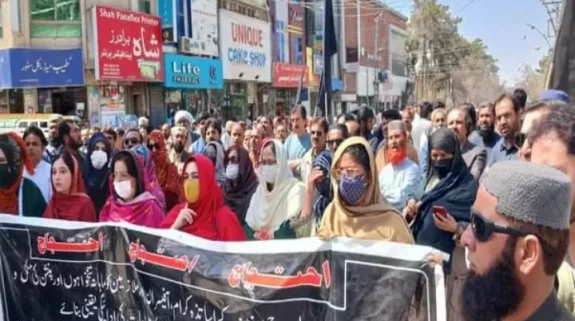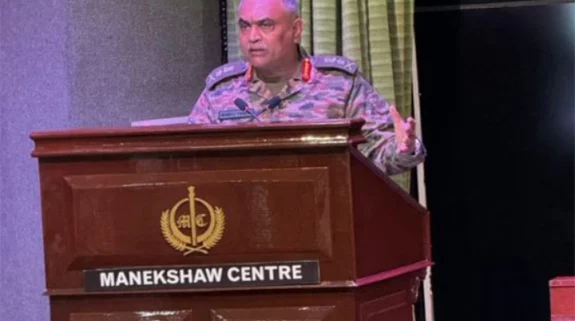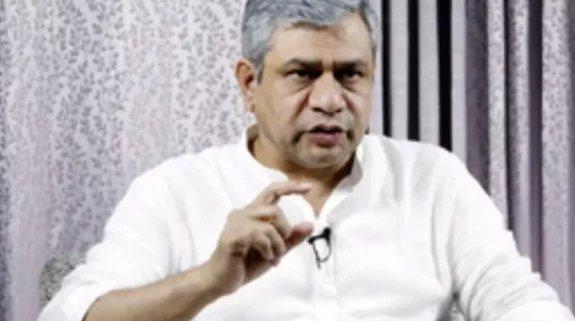By Vivek Mishra and Mark S Cogan
In his first bilateral visit, Japanese Prime Minister Kishida Fumio visited India on the beginning leg of a three-day swing through New Delhi, and later Cambodia. Meeting with Indian Prime Minister Narendra Modi, Kishida aimed to tighten relations with India, and further promote bilateral ties, as 2022 marks the 70th anniversary of diplomatic relations between the two countries.
Video:
PM Kishida: I have just completed visits to India🇮🇳 and Cambodia🇰🇭 as my first bilateral trip since taking office. (1/3) pic.twitter.com/wr1TzhSjbK
— PM's Office of Japan (@JPN_PMO) March 22, 2022
Japan holds India in high regard, as iron ore from India contributed to Japan’s post-war recovery and after then-Prime Minister Nobusuke Kishi visited India, Japan provided loans to India, constituting its first official development assistance (ODA) package.
1957:: PM of Japan, Nobusuke Kishi (Grandfather of @AbeShinzo ) Arrives In India. Indians Welcome Japan PM #IndiaJapan
(Photo Division) pic.twitter.com/ECzc3uLvuS
— indianhistorypics (@IndiaHistorypic) September 13, 2017
More recently, Japan has been a strong partner for India in the East and a close multilateral partner in the Quad. Within the Quad, the India-Japan’s bilateral relationship is ostensibly the strongest, with no long-standing disputes or policy disagreements. India and Japan are among the largest donors in the broader Indo-Pacific, and both have strategic interests in a free and open region as well as a vested interest in containing Chinese hegemony.
Watch the 'Master' himself.📢
In 2007, @AbeShinzo carved the idea of #IndoPacific where he highlighted how #India & #Japan will nurture seas. #QUAD #BlueEconomy #SeaOfHope @JFNewDelhi @JPN_PMO @JapaninIndia @IndianEmbTokyo pic.twitter.com/pRexDyb5Bk— Shashank S. Patel (@ShashankSPatel_) November 19, 2021
However, the current trip of the Japanese leader may have had a larger purpose. The crisis in Ukraine has opened a slight gap in foreign policy choices. India and Japan have clearly adopted different positions on the crisis, with Japan joining the United States, Australia and a host of Western countries implementing broad economic sanctions on Russia, while India has resisted such efforts, taking a cautious or neutral position in its ties with Moscow. Their disagreements over Ukraine represent the most significant policy disagreements among Quad members. At an earlier February meeting among Quad Foreign Ministers in Melbourne, India's External Affairs Minister, Subrahmanyam Jaishankar, noted point blank that “we are for something not against someone,” a different take than from Australia's Marise Payne or Yoshimasa Hayashi from Japan.
While on the outside, both countries called for an immediate end to the violence raging in Ukraine, as the Russian military continues the third week of its “special” operation. On the other hand, Kishida told gathered reporters that democracies should “cooperate” more, noting that Russian President Vladimir Putin’s aggression in Ukraine had “shaken the global order,” in contrast to Modi’s more subdued focus on economic cooperation. Kishida has been trying to gently push India, which has longstanding security and energy ties to Moscow, to align with the other Quad partners in condemning Russian aggression. Unfortunately for Japan, the two leaders could only settle on agreeing that a disruption in the international status quo would not be tolerated. Considering its position with Quad partners, India’s predicament could not be more different than just weeks ago, when U.S. State Department spokesman Ned Price acknowledged and said “okay” to India’s “distinct” relationship with Russia.
India’s recent energy relations with Russia have had is at odds with the United States. New Delhi has considered a payment mechanism distributed across local currencies to allow it to trade with Moscow, currently kneeling due to heavy economic sanctions. The Indian Oil Corporation recently bought three million barrels of Russian oil at a discounted price, while as a whole India may buy more than 15 million barrels this year. India’s Central Bank is considering a rupee-rouble arrangement with Moscow that would enable exports to Russia despite sanctions, an arrangement that would likely anger the rest of its Quad partners.
On the other hand, tensions over Ukraine are short-term concerns only. Trade from India to Japan in 2020 crossed over $3 billion, while trade the opposite direction was close to $8 billion. Japan at the meeting with PM Modi on Saturday, March 19 unveiled plans to boost investment in India’s infrastructure, with more than $40 billion set to enter the country over the next five years, from investments in water supply, agriculture, health care, energy, and cybersecurity. Tokyo has in the past supported infrastructure projects in India, from urban development to bullet train technologies. India needs these projects to stay competitive with China. For example, the Mumbai-Ahmedabad High Speed Rail (HSR) Corridor, being built with the help of Japan, will connect Mumbai, the second most populous metropolitan area in India with Ahmedabad. The 500-kilometer line will take no longer than two hours between the two cities.
The Mumbai Ahmedabad High Speed Rail project will be an engineering marvel that will require construction of various structures such as 12 stations, 3 Rolling stock depots and 8 maintenance depots, HSR Training Institute, and more. #BulletTrainIndia #MAHSR pic.twitter.com/BBiMFG6mqB
— NHSRCL (@nhsrcl) August 11, 2020
Perhaps all Quad members, including Japan, realize India’s unique position in the ongoing Ukraine-Russia war, with the latter’s trade and humanitarian concerns overlapping both Russia and Ukraine. As such, the visit of Japanese Prime Minister may have served its larger purpose – to prioritize geopolitical interests in the Indo-Pacific and strengthen regional resolve. It also presented an opportunity to the two countries to impart continuity to the Quad’s resolve of not letting a Ukraine-like crisis hit the Indo-Pacific and build economic and strategic bulwark against such possible impact. Bolstering a stronger economic arc in the Indo-Pacific between India and Japan has been an important purpose of the two countries’ economic cooperation. India and Japan have already accomplished the target of 3.5 trillion Japanese Yen (JPY) under the 2014 Investment Promotion Partnership and during the current visit Japan committed an additional investment of 5 trillion JPY. It is a common realization that a more immediate focus on the economics of the Indo-Pacific is going to benefit both countries much more.
Vivek Mishra is a Fellow with ORF’s Strategic Studies Programme & Mark S. Cogan is Associate Professor of Peace and Conflict Studies at Kansai Gaidai University in Osaka, Japan.






